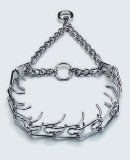Archive for the ‘advice’ Category
6 things to consider BEFORE adopting a pet for the holidays
With the holidays approaching I felt this would be a timely post. The following is a list of things to consider before acquiring a dog for the holidays.
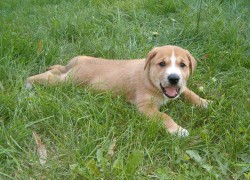 1) Consider your motivation: What is the main reason for acquiring a pet? Some people have recently lost a pet and are missing the place their pet held in their heart or in their family life. Are you trying to refill that empty space? This is an understandable motivation and on the surface it seems like a good idea. However I would strongly recommend that you give yourself adequate time to grieve your last pet before getting a new one. You risk comparing the two with the new one falling short. How can a brand new member of the family compete with your idealized notion of your newly deceased dogs? Dearly departed Lassie could wipe his own paws! The new one can’t even indicate that he needs to go outside. The old one laid around 10 hours a day and needed a 15 min walk twice a week. The new one is tearing around the living room for hours on end. Be very careful that you are ready for everything a new dog entails – training, exercise and expense.
1) Consider your motivation: What is the main reason for acquiring a pet? Some people have recently lost a pet and are missing the place their pet held in their heart or in their family life. Are you trying to refill that empty space? This is an understandable motivation and on the surface it seems like a good idea. However I would strongly recommend that you give yourself adequate time to grieve your last pet before getting a new one. You risk comparing the two with the new one falling short. How can a brand new member of the family compete with your idealized notion of your newly deceased dogs? Dearly departed Lassie could wipe his own paws! The new one can’t even indicate that he needs to go outside. The old one laid around 10 hours a day and needed a 15 min walk twice a week. The new one is tearing around the living room for hours on end. Be very careful that you are ready for everything a new dog entails – training, exercise and expense.
Other people haven’t lost a pet, they just get an idea in their head that getting one is a good idea. Maybe a friend got a new dog and is encouraging them. Maybe they are lonely, or scared at home alone. Maybe they saw something on TV about how many dogs are euthanized each day and wanted to do something to help. Maybe they have always wanted a dog and, well “why not?!” None of these are necessarily “bad” reasons for getting a dog, just make sure that the thinking about it doesn’t stop there. Really try on the reality of dog ownership before impulsively going to an “adoption event” at your local pet super store. Impulse buys of dogs usually end in a dog getting returned.
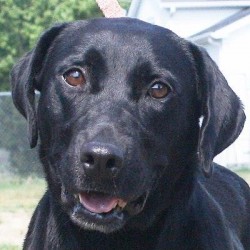 2) Consider your timing: Why do you want a pet now? Why now rather than after the holidays? Most people have this romantic notion of what a new baby dog or cat will be like, popping out of a gift box on Christmas morning. Oh how the kids will love it! Oh how the girlfriend will swoon!! And that is true, usually people ARE really excited by a new little ball of warm fur and sweet big eyes. But that excitement rapidly wanes, especially after the puppy or kitten pees on something (or someone), eats or tears up something else precious, or has to be let out in the frigid cold to potty. Really, do you really want the extra stress and effort of bringing a pet into your life at this busy time? Let yourself explore this as deeply as possible because I can tell you that getting a pet before the holidays SOUNDS like a good idea but rarely is.
2) Consider your timing: Why do you want a pet now? Why now rather than after the holidays? Most people have this romantic notion of what a new baby dog or cat will be like, popping out of a gift box on Christmas morning. Oh how the kids will love it! Oh how the girlfriend will swoon!! And that is true, usually people ARE really excited by a new little ball of warm fur and sweet big eyes. But that excitement rapidly wanes, especially after the puppy or kitten pees on something (or someone), eats or tears up something else precious, or has to be let out in the frigid cold to potty. Really, do you really want the extra stress and effort of bringing a pet into your life at this busy time? Let yourself explore this as deeply as possible because I can tell you that getting a pet before the holidays SOUNDS like a good idea but rarely is.
3) Consider your schedule: Do you have time to spare for a new pet? Puppies especially require intensive work in their first year of life. I always tell people that if you put in the hard long hours of training on the front end, you’ll reap the benefits as they grow older. You should plan on spending a good hour on training each day, spaced throughout the day of course! Little minds have short attention spans. You should also plan on spending an additional three to five hours a day on playing and exercising the new pup. That is a minimum of four to six hours a day every day of the week in one on one time interacting with the pup. And puppies don’t sleep in on weekends. They will need potty breaks, some of the young ones in the middle of the night. And no puppy under a year should spend more than 4 hours in a crate during the day. Ever. This is just a reality of dog ownership – if you take on a baby dog, you need to be able to care for it well for that first year of life.
 4) Consider the expense: Dogs cost money. The expense of dog food, basic care supplies, bedding and training can run you into the thousands of dollars. And routine vet care is expensive too. An annual wellness check can run anywhere from $20 to $60, and that is not including the cost of the vaccinations. Adding that expense usually brings the cost to over $200 a visit. Do yourself a favor and do your research. Find out what your local vets charge, how much training in your area costs and what sorts of supplies you’ll need. Many people highly under estimate the cost of owning a dog.
4) Consider the expense: Dogs cost money. The expense of dog food, basic care supplies, bedding and training can run you into the thousands of dollars. And routine vet care is expensive too. An annual wellness check can run anywhere from $20 to $60, and that is not including the cost of the vaccinations. Adding that expense usually brings the cost to over $200 a visit. Do yourself a favor and do your research. Find out what your local vets charge, how much training in your area costs and what sorts of supplies you’ll need. Many people highly under estimate the cost of owning a dog.
5) Consider the source: There are many places to acquire a dog – some reputable and many others not. Do not get a dog from Craig’s List. Do not get a dog from a puppy mill. Getting a dog from either of these sources will end badly for you. If you feel a need to “save” a dog from a situation such as this where there is obvious abuse going on, contact your local authorities ( the police) and let them know what you have seen and where the animal is located and let them do the saving. Many people choose a pet store to purchase their dogs. Please do your research well because many of these dogs and puppies are also sourced from puppy mills. Reputable rescue organizations are wonderful places to get a dog or puppy as their staff and volunteers are usually well trained and knowledgeable and the animals are well cared for. Additionally, you can acquire a dog at low cost. However, the background of the dogs is never fully known and there is no way to insure the dog’s temperament or even size as they develop. When you need or want to be as certain as possible about a dog’s heritage or temperament, buying from a reputable, long standing breeder is your best bet.
 6) Consider the age of the dog: Sure puppies are cute but puppies are a LOT of work. They chew things, dig things, play bite children’s hands, have a lot of energy and need nearly constant supervision. They also will need to be house trained and will usually cry a lot at night for the first few nights. Mature dogs are more predictable, tend to need less training, are more used to living with a family. Senior dogs require less exercise (usually) and are usually the best trained of all the ages but they are, well, old and often set in their ways. Think about what age works best for your lifestyle and your family.
6) Consider the age of the dog: Sure puppies are cute but puppies are a LOT of work. They chew things, dig things, play bite children’s hands, have a lot of energy and need nearly constant supervision. They also will need to be house trained and will usually cry a lot at night for the first few nights. Mature dogs are more predictable, tend to need less training, are more used to living with a family. Senior dogs require less exercise (usually) and are usually the best trained of all the ages but they are, well, old and often set in their ways. Think about what age works best for your lifestyle and your family.
Trouble when adding a new dog to your pack
We recently received this note from a reader in response to our post How to Introduce Two Dogs and thought it deserved it’s own post:
Hi,
I recently got a Chow Chow (a week ago), they don’t seem to get on quite well. I believe I introduced them incorrectly as I read somewhere on the web saying we should let them affirm their ranking system and allow them to have small fights. After first two days, I noticed something seems amiss as the fight just got more aggressive. Which I decided to do more research and fought an alternative suggestion which is to stop such dominance fight should it occur.
I have the chow chow restricted by a fencing in a small area (Toilet train)and allow my other dog, an 11 month old Japanese Spitz to roam the house as it is toilet trained. My Spitz tends to start a fight with the 4 month old chow chow whenever i let it out of the confined area. I remain calm and assertive throughout hoping to correct my spitz but it doesn’t seem to be effective. Out of this one week, there was only one occasion where the two of them were peacefully roaming around the apartment for 10 mins. However, everything was back to square one again.
I bring them for walk daily, side by side (Chow on my left, Spitz on my right). My spitz gets along quite well when out of the house, however, there were occasion where my Chow started biting, unsure if it was play biting my Spitz during walks.
I’m hoping to get some advices on how to introduce two properly and get them to live harmony in my apartment.
Thank you, and your advise is greatly appreciated.
My response:
Your dogs are both young so there is that going for you. It seems that you have done a fair bit of research on your own, good for you! It will help you to be educated on how to read dog’s body language so you can be more confident in knowing what you are seeing – aggression or dominance display, play or fighting, how to know when things are getting tense and you need to intervene.
First thing I would do is this: (more…)
What to do when dogs jump on guests
The Question: I want to know what the proper way to handle jumping on visitors is. I have been holding him down with his collar, using the other hand in front of his nose and saying “OFF” and it’s not working too well.
I just hate when he jumps on my clients coming in……….
The Answer: I would handle this one of two ways – if you have a client who is ok with it, I would have your dog on leash when they come over. Tell them that he is in training and use that experience to teach him that the right way to great is to sit nicely. Only if he is seated does he get any attention. If he isn’t sitting you have to get him into a sit (or a down is fine) and make him hold that position until you are ready for him to be greeted. And he should hold his sit throughout the greeting. In fact, this is a skill that is tested in the canine good citizen test – sitting nicely while greeted…so it is considered a somewhat advanced skill. If you aren’t sure your client would be ok with part of your attention on your dog, or if you don’t want to do that, then I would crate or somehow separate him during these encounters. Just keep in mind – every time he engages in a behavior you don’t like, he is practicing that behavior. If you can’t get him to practice other ones, then at least stop him from the opportunity to engage in the unwanted behavior.
Tips for taking home your new puppy
Remember these tips to make your transition go well:
* Limit the space in the house where the puppy gets to go. Expand it over the next few weeks.
* Walk the dog (not carry) to the door and show where they should potty.
* Potty the pup after every transition – after eating, drinking, playing, sleeping – potty them!
* Withhold food and water after 8 pm, do the final potty around 11pm, and wake yourself (and the puppy) up around 2am to potty again, and then again at 6am. That should do it! You will need to keep this up until the pup isn’t pottying at the 2am time.
* If there is a potty accident in the house DO NOT correct the puppy unless you see it happening! Pups only relate a consequence to the behavior that happened 3 seconds prior. So if you see a puddle, call the pup to you and scold it, you are in essence, scolding the puppy for coming to you.
* Remember this rule – any talking, comforting, and removing from the crate will reinforce the behavior that happened right before (usually crying, whining or scratching at the crate). If you don’t what those behaviors, don’t reinforce them!
* Keep the energy low for the first two weeks. It will feel like you are ignoring the puppy but it is the nicest thing you can do to give them the time they need to acclimate. If you have kids, limit the amount of time they get to interact with the pup.
* Keep the crate open and accessible during the periods of the day where the pup isn’t confined – that way when she/he needs comfort or respite, she/he can retreat there.
* Try to match the energy of the puppy – when they’re quiet do quiet activities (cuddling) and when they’re active do more active things (playing and not cuddling).
* Remember to give them access to food four times a day for the first two months home. Then move to three until 5 or 6 months old and then to twice a day. Feed amount suggested on bag.
* DO NOT keep a collar on a young pup who is confined to a crate – it is a strangulation hazard.
* DO teach leash manners, inside, after the first few days home – just let the leash drag for a day, then pick it up and encourage the pup to follow you, do not tug or reel them in.
* Do consider signing up for a puppy class anytime after the pup is 2 months old.
AND MOST importantly …
Good luck!! Trust your instincts and you’ll do fine.
Thoughts about the Prong Collar
Many many people have very strong feelings about the prong (or pinch) collar. I have to admit it does look like a piece of medieval torture equipment. It looks dangerous and almost violent. But it works like a dream on many many dogs.
Recently, in one of my classes I had a student who also happens to be a working veterinarian, who has a very rambunctious, very strong dog she recently adopted from rescue. She came to class with a head halti, the training device that covers the muzzle of the dog and helps to control the dog’s behavior by controlling their head, much like a bridle works for controlling a horse. While this tool is often very effective for some dogs it was not working for this dog. Her dog was lunging and jerking her all over the ring and the force of all that power was being absorbed by the dog’s neck. It was clear that she was becoming more frustrated and admitted after class that the halti wasn’t working. I suggested trying a prong but said she didn’t want to because she believed prong collars were “inhumane.” In my work as a trainer, I’ve learned that the best tool is the one that addresses the dog’s behavior problem with the least amount of force and that the owner feels comfortable and capable of working with. So, even though it was clear to me that the prong would likely work wonders, I spent time explaining ways she could make the head halti work for her and advised her to be more careful of how she worked with the halti.
The interesting thing is, I believe that she could have had success with my method of working with that tool. But it would have taken a LOT of work on her part to convey to the dog what behaviors were correct and which were not. It seems to me that a lot of dogs really just don’t understand that we’re frustrated with them when we yank them around by their leashes. It almost seems like they think it is a weird game we play. If you ever watch dogs play with each other you know how physical they are, how banging into and grabbing and jostling one another is all part of the fun. I really believe that most dogs being yanked around by their owners think that we’re having fun. To make the halti work for her in this case she had to make it crystal clear what behaviors were unwanted, and what ones were, and most importantly that this wasn’t a game but rather, work. This would take a lot of training sessions with impeccable timing and lots of attention. And frankly, most people want faster results or just don’t have the time to devote to this sort of thing.
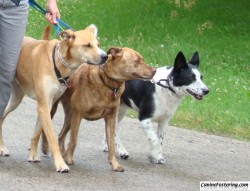 I don’t know what her specific situation is but this week in class she reached a sort of person limit. She was clearly frustrated and the dog was confused. When the handler and dog aren’t working as a team, no learning can happen. I gently suggested she just try out a prong for the class to see if she liked the results, and she agreed.
I don’t know what her specific situation is but this week in class she reached a sort of person limit. She was clearly frustrated and the dog was confused. When the handler and dog aren’t working as a team, no learning can happen. I gently suggested she just try out a prong for the class to see if she liked the results, and she agreed.
The results were, as you’d expect, remarkable. The behavior improved immediately and the handler became more calm, more confident and better able to train the dog. The dog’s focus on the handler improved and there was more eye contact between the two and therefore more opportunities to reinforce the focus and the work. I really watched this team and challenged myself to see if the dog had just “given up” or had lost its spark and was just complying out of fear. I didn’t see that. What I did see was the same dog, just a better, more focused, more self-controlled version. The dog seemed to finally understand the purpose of the whole training thing – it was like her mind said, “OH, that’s what you’re trying to tell me!” And when the handler expressed her pleasure at the dog’s behavior , the dog responded with pleasure right back. That’s the whole point of training in my opinion – to get on the same page with our dogs so we understand each other’s role and what is expected, and we know how to meet those expectations.
Moral to this story? Be careful of dismissing any training method or tool based on a story, a belief or an opinion. Keep your mind open and your focus on exploring what works. Trust your gut, but be honest with yourself. If your way of doing something isn’t working, ask for help and try something outside your comfort zone.
Letter from a frustrated dog owner
Here’s an exchange with a person who I’ve been working with recently to get their dog ready to take the American Kennel Club‘s Canine Good Citizen (CGC) test.
The question:
Kristin,
I’m really frustrated with where we are right now with S’s walking. As long as there are no distractions, he does fairly well. It’s something we could continue to work with. But if there are distractions, it all goes out the window. Last night he saw a squirrel within the first 100 yards and from then on he was pulling at the leash the whole time looking for the next squirrel or rabbit. I had been hoping to have a pleasant walk so I didn’t have any treats with me. But it really wouldn’t have mattered. You can get his attention with a “watch”, depending on how far away the distraction is, but as soon as you reward him for it, he’s back to the distraction.I’m really torn. I’d like to not have to be in training mode every time we go for a walk. Plus, to really do it right, I would need a whole bag of treats and would have to eliminate a meal. But if I don’t work with him, then I feel I’m reinforcing negative actions on his part. And my arm gets tired.
Plus I have no idea how you trained your dogs not to pee or poop on walks. It takes him less than a stride to get all four feet planted and he’s almost immovable then. Any ideas?
T-
And my response:
Dear T-
Not being next to you on the walk makes it hard for me to really get what’s going on. Maybe one of these nice late summer days we could do just that…? But, what you have to do is to keep up with the walking. I agree, treats aren’t really the answer. It is sort of about respect in my opinion…he believes his “work” (hunting critters – his job that he’s assigned himself in lieu of anything else to do) is more important than anything you have to tell him. So, somehow, we’ve got to get across that we have a different job in mind for him, a better one. But until he gets this, really understands this on his doggy level, he just doesn’t see the point in not doing it.
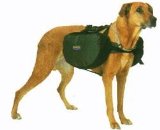 So, sometimes a harsher correction tool can help – a prong/pinch collar helps communicate in no uncertain terms that his behavior isn’t appreciated. The correction makes sense to him and is aversive enough (without being cruel) to get through to him that you want him to stop. Other options include giving him another job while on walks. That’s where a good back pack comes in handy. I recommend dog back packs from RuffWear. They make packs that I’ve seen and used and are acceptable. Fill the pack with up to 20% of S’s body weight and then go for the walk. It is amazing how this can change a dog. Plus, it’s hard to pee with a pack on.
So, sometimes a harsher correction tool can help – a prong/pinch collar helps communicate in no uncertain terms that his behavior isn’t appreciated. The correction makes sense to him and is aversive enough (without being cruel) to get through to him that you want him to stop. Other options include giving him another job while on walks. That’s where a good back pack comes in handy. I recommend dog back packs from RuffWear. They make packs that I’ve seen and used and are acceptable. Fill the pack with up to 20% of S’s body weight and then go for the walk. It is amazing how this can change a dog. Plus, it’s hard to pee with a pack on.
So, try those things. However, your comment about not wanting to be in training mode with each walk is also a clue that you are losing your patience. I hope you come to accept that you kind of do need to always be in training mode when out with your dog. The training gets easier with time, but you can never just check out. It’s sort of like parenting – you’re always on, no matter how old they get. The older they get, the easier and less intensive the work is, but you still are the dad, always. So, try to find a place of acceptance with that fact. So, try to find a place of acceptance with that fact. This doesn’t mean that you have to tolerate a sore arm and a disrespectful dog, but you do have to continue training him his whole life.
Let me know if this helps.
-Kristin
